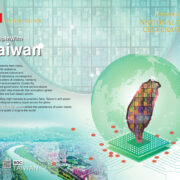High cost of health care

“Bawal ang magkasakit,” so goes a TV commercial. This is true in the Philippines where health care costs are among the highest in Asia, making them unaffordable for many Filipinos that there are those who die without seeing a doctor in their lifetime.
A new study by the Philippine Institute for Development Studies (PIDS) bears this out. It said that higher government spending on health has not translated into a big reduction in out-of-pocket spending, or the costs borne directly by households.
PIDS data showed that total health spending in the country reached P1.4 trillion in 2024, or about 5 percent of the gross domestic product. This translates to roughly P12,000 per Filipino, an increase from about P3,000 in 2000.
Public spending drove most of this growth through the Department of Health (DOH), the Philippine Health Insurance Corp. (PhilHealth), and local government units, which increased 2.6 times from 2014 until 2024.
Despite this, however, out-of-pocket spending also rose by 1.6 times over the same period.
Per the Philippine National Health Accounts, Filipino households’ out-of-pocket expenses amounted to P615.16 billion in 2024. This represented an 11.8 percent increase from the P550.08 billion posted in 2023.
A distant promise
As a report by this paper last June noted, access to affordable and high-quality health care remains a distant promise for millions of Filipinos even with laws, including Republic Act (RA) No. 11223 or the Universal Health Care Act, in place.
It cited the 2024 Asia Care Survey by Manulife, which surveyed 1,050 respondents, showing that almost 45 percent of health expenditures in the country were paid out of pocket.
The report further noted how many families, already burdened by inflation, are drowning in out-of-pocket expenses even though 95 million citizens are already enrolled in the country’s national health insurance system.
Imagine a poor Filipino household whose income could barely cover basic necessities like food and utilities now faced with a health issue. While there are public health centers and PhilHealth coverage, there would still be incidental expenses that they need to shoulder such as transportation, food and health services and medicines that may not be covered. They would then probably choose to ignore a cough or colds to save a little money. But what if that minor illness develops into something even more serious that could cost them their livelihood and could wipe out their finances?
Catastrophic spending
Global advisory, broking and solutions company Willis Towers Watson in its 2025 Global Medical Trends Survey estimated an increase by 18.3 percent in health-care expenses this year with the burden falling heavily on patients’ families.
To ease this burden, PhilHealth plans to cut out-of-pocket medical expenses by up to 25 percent in three years. But for this to happen, the government needs to increase health spending.
This goal is unlikely to be achieved, however, if the government keeps on cutting the budget for the health sector. In this year’s budget, for example, one of the biggest cuts was the P31.2 billion allocation for the DOH’s indigents program. The sector’s budget also decreased by 0.2 percent, per the Ibon Foundation, a share that looks inconsequential but has impacted crucial support for poor Filipinos.
PIDS health economics and finance program director Valerie Gilbert T. Ulep noted that the average for upper middle-income countries in health spending is 60 percent. But the Philippines, currently classified as a lower-income country aspiring for that status, spends only around 44 percent on public health.
In 2023, Ulep said, about 1.2 million households faced catastrophic spending, or expenses that exceeded 40 percent of their “capacity to pay.” The country also scored 58 in the Universal Health Coverage service coverage index, 10 points below the global average of 68.
Zero-balance billing
To be fair, the government has implemented reforms to improve access to health care. These include the zero-balance billing policy, expansion of PhilHealth’s benefit packages as well as medicines coverage.
But these programs need to be sustained and financed. If the government doesn’t put money where its mouth is, health care as a fundamental right will remain elusive for Filipinos.
This is also why the transfer of P60 billion of PhilHealth’s “excess funds” last year was controversial because how can the national government deem there was money to spare for nonhealth-related projects, no matter how urgent they were supposed to be, when the health sector itself is underfunded?
Six years since RA 11223 was enacted to provide Filipinos with equitable access to quality and affordable health-care services, many of them, especially those in the low- and middle-income classes, remain trapped in financially catastrophic medical situations. As they say, Filipinos are only one hospital bill away from poverty. This should not be the case.

















